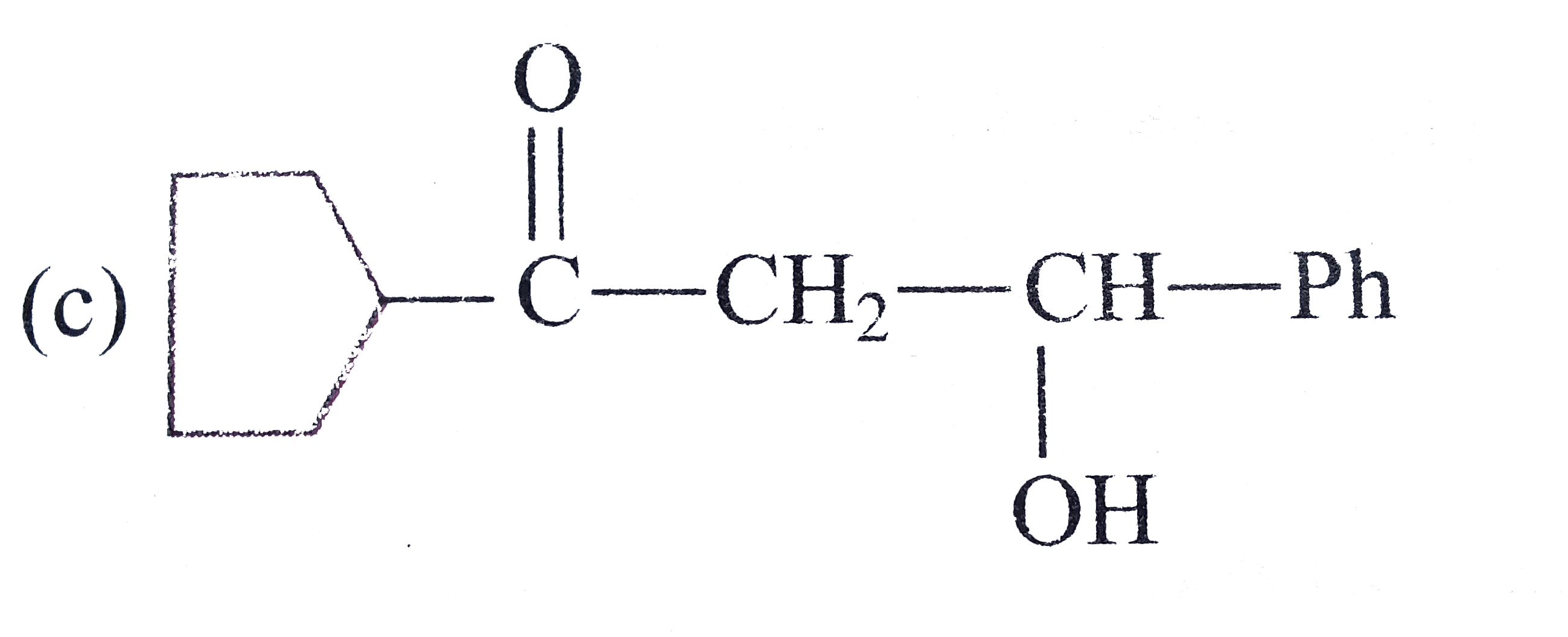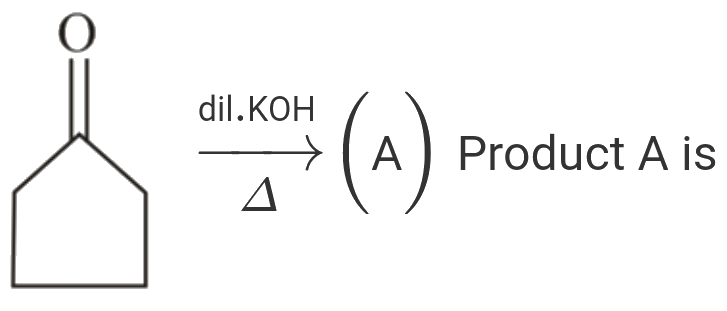Isobutylene +HBr−−−−→peroxides product is :
Tertiary butyl bromide
Isobutyl bromide
Tertiary butyl alcohol
Isobutyl alcohol
The correct Answer is:B
To solve the question regarding the reaction of isobutylene with HBr in the presence of peroxides, we will follow these steps:
Step 1: Identify the Structure of Isobutylene
Isobutylene, also known as 2-methylpropene, has the following structure:
- It consists of three carbon atoms (C) and a double bond between the first and second carbon.
- The structure can be represented as:
CH3|CH2=C|CH3
Step 2: Understand the Reaction Conditions
The reaction involves adding HBr in the presence of peroxides. The presence of peroxides indicates that the reaction will follow a free radical mechanism, leading to anti-Markovnikov addition.
Step 3: Chain Initiation
In the presence of peroxides, the first step is chain initiation:
- Peroxide undergoes homolytic cleavage to form two RO radicals.
- One of these radicals reacts with HBr, resulting in the formation of a Br radical and an alcohol (ROH).
Step 4: Chain Propagation
Next, we move to chain propagation:
- The Br radical generated in the previous step will attack the isobutylene.
- The double bond in isobutylene will break, and the Br radical will bond to the carbon that has more hydrogen atoms (due to anti-Markovnikov addition).
- This results in the formation of a more stable tertiary radical.
Step 5: Formation of the Product
The newly formed radical will then react with another HBr molecule:
- The Br radical will leave, and the hydrogen will attach to the carbon that originally had the double bond.
- This leads to the formation of isobutyl bromide (2-bromobutane).
Step 6: Final Product
The final product of the reaction is isobutyl bromide, which can be represented as:
CH3∣CH3−C−CH2−Br
Conclusion
The product formed when isobutylene reacts with HBr in the presence of peroxides is isobutyl bromide.
Isobutylene, also known as 2-methylpropene, has the following structure:
- It consists of three carbon atoms (C) and a double bond between the first and second carbon.
- The structure can be represented as:
CH3|CH2=C|CH3
The reaction involves adding HBr in the presence of peroxides. The presence of peroxides indicates that the reaction will follow a free radical mechanism, leading to anti-Markovnikov addition.
In the presence of peroxides, the first step is chain initiation:
- Peroxide undergoes homolytic cleavage to form two RO radicals.
- One of these radicals reacts with HBr, resulting in the formation of a Br radical and an alcohol (ROH).
Next, we move to chain propagation:
- The Br radical generated in the previous step will attack the isobutylene.
- The double bond in isobutylene will break, and the Br radical will bond to the carbon that has more hydrogen atoms (due to anti-Markovnikov addition).
- This results in the formation of a more stable tertiary radical.
The newly formed radical will then react with another HBr molecule:
- The Br radical will leave, and the hydrogen will attach to the carbon that originally had the double bond.
- This leads to the formation of isobutyl bromide (2-bromobutane).
The final product of the reaction is isobutyl bromide, which can be represented as:
CH3∣CH3−C−CH2−Br
The product formed when isobutylene reacts with HBr in the presence of peroxides is isobutyl bromide.
Topper's Solved these Questions
- BOOK - MOTIONCHAPTER - HYDROCARBON EXERCISE - QUESTIONS6videos
HYDROCARBON
- BOOK - MOTIONCHAPTER - HYDROCARBON EXERCISE - Exercise - 185videos
HYDROCARBON
- BOOK - MOTIONCHAPTER - GRIGNARD REAGENTEXERCISE - EXERCISE-216videos
GRIGNARD REAGENT
- BOOK - MOTIONCHAPTER - IONIC EQUILIBRUIMEXERCISE - Exercise -4 (Level -II)14videos
IONIC EQUILIBRUIM
Similar Questions
Knowledge Check
- Question 1 - Select One
(A)HBr−−→CH3−CH=CH2HBr−−−−−−→(Peroxide)(B) Find the product (A) and (B) in the given reaction
ACH3−CH∣Br−CH3,CH3−CH2−CH2−BrBCH3−CH−CH2−Br,CH3−CH∣Br−CH3CBr−CH2−CH=CH2,CH3−CH=CH−BrDCH2∣Br−CH=CH2,CH3−C∣Br=CH2 - Question 2 - Select One

A+BNaOH−−−→Δ Product :A B
B C
C DPh−CH=CH−O∣∣C−Ph
DPh−CH=CH−O∣∣C−Ph - Question 3 - Select One
CH3CHCH3∣Bralc.KOH−−−−−→AHBr−−−−→peroxideBCH3ONa−−−−−→C
In the above reaction sequence, the final product is :Adiethyl etherB1-methoxypropaneCisopropyl alcoholDpropylene glycol
Isobutene HBr−−−−→peroxideAKCN−−→Bdil.H2SO4−−−−−−→C+ inorganic salt D
C and D areView SolutionD-Glucose NHO3−−−→Δ(A), Product (A) is :
View SolutionIn the reaction
 OCH3HBr−−→ the product are:View Solution
OCH3HBr−−→ the product are:View SolutionIn the following reaction C is, CH3−CH=CH2+ HCl
Organic−−−−−−→PeroxideAAg2O−−−−−→MoistBEt MgBr−−−−→CView SolutionCH3CH=CH2HBr−−−−→Peroxide(A)Mg−−→(B)(1)CO2−−−−−−−−→(2)H2O/H+(C),(C) is
View Solution


